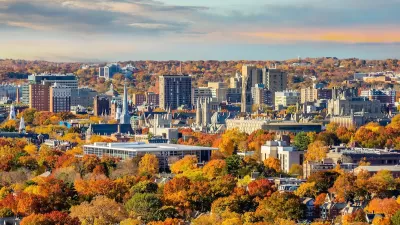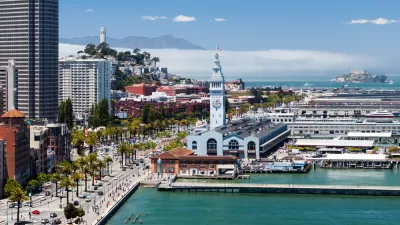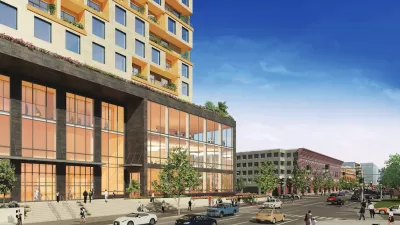A target of 1950s urban renewal, New Haven is looking to rewrite renewal's wrongs by re-connecting the Hill neighborhood with downtown via a highway cap project. Critics complain the project doesn't go far enough to heal the area's historic wounds.
New Haven's Oak Street Connector, a spur of Interstate 95, cuts between the heart of the city's downtown and the medical industry-heavy Hill neighborhood to the southwest. C.J. Hughes, of The New York Times, reports on a promising effort to re-'cross' the highway with 'Downtown Crossing,' "a $135 million redevelopment plan that has been years in the making."
"Echoing recent efforts by San Francisco, Milwaukee and Boston to alter or remove their highways," reports Hughes, "Downtown Crossing targets a one-mile, mostly sunken section of the connector running roughly between Orange and College Streets." Creating ten acres of new developable land, neighborhood stakeholders and city officials hope the project will act as a catalyst for future development, and increase tax revenues for the city.
Critics of the project have targeted its 850-space parking garage, not required of the developer, and what the New Haven Urban Design League sees as a lack of apartments, stores, and transportation options to "create lasting streetfront vitality."
Boosters hope Downtown Crossing is only the first of a wave of commercial development for the New Haven area, where a low 10.6% office vacancy rate sends a clear message that more space is needed.
FULL STORY: A Plan in New Haven to Right a Highway’s Wrong

Trump Administration Could Effectively End Housing Voucher Program
Federal officials are eyeing major cuts to the Section 8 program that helps millions of low-income households pay rent.

Planetizen Federal Action Tracker
A weekly monitor of how Trump’s orders and actions are impacting planners and planning in America.

Ken Jennings Launches Transit Web Series
The Jeopardy champ wants you to ride public transit.

Washington Legislature Passes Rent Increase Cap
A bill that caps rent increases at 7 percent plus inflation is headed to the governor’s desk.

From Planning to Action: How LA County Is Rethinking Climate Resilience
Chief Sustainability Officer Rita Kampalath outlines the County’s shift from planning to implementation in its climate resilience efforts, emphasizing cross-departmental coordination, updated recovery strategies, and the need for flexible funding.

New Mexico Aging Department Commits to Helping Seniors Age ‘In Place’ and ‘Autonomously’ in New Draft Plan
As New Mexico’s population of seniors continues to grow, the state’s aging department is proposing expanded initiatives to help seniors maintain their autonomy while also supporting family caregivers.
Urban Design for Planners 1: Software Tools
This six-course series explores essential urban design concepts using open source software and equips planners with the tools they need to participate fully in the urban design process.
Planning for Universal Design
Learn the tools for implementing Universal Design in planning regulations.
Heyer Gruel & Associates PA
Ada County Highway District
Institute for Housing and Urban Development Studies (IHS)
City of Grandview
Harvard GSD Executive Education
Toledo-Lucas County Plan Commissions
Salt Lake City
NYU Wagner Graduate School of Public Service





























